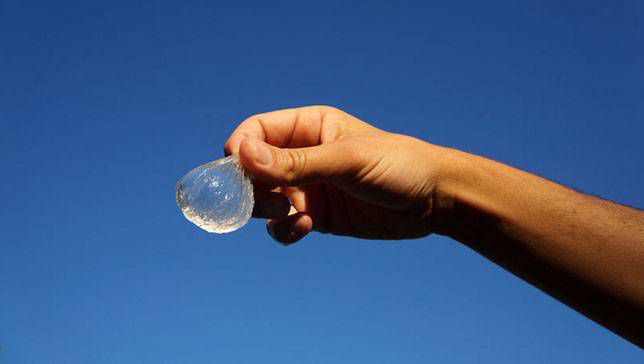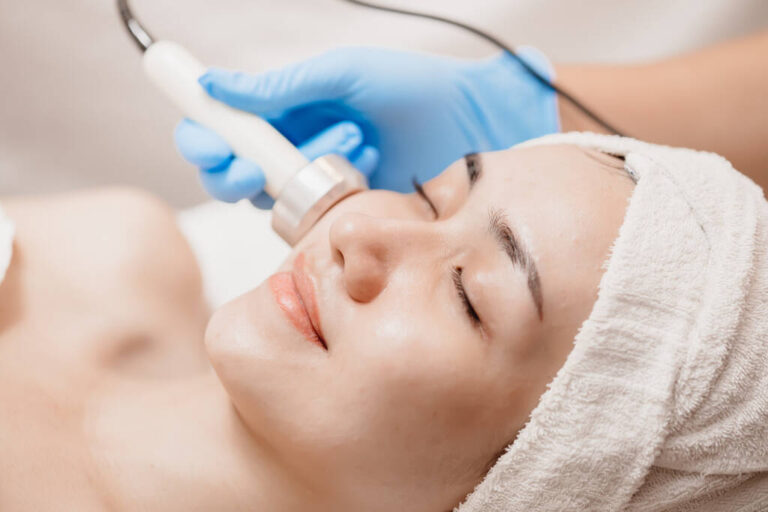
Source : TreeHugger
Consumers have been hesitant to give up single-use disposable water bottles, prompting serious attempts by campaigners to encourage the usage of substitutes. 38 billion water bottles wind up in landfills or the ocean per year in the U.S. alone. Not only is our atmosphere polluted by this plastic epidemic, but it also burns out scarce non-renewable energy. These innovators have been working on a fascinating solution to the problem of the plastic bottle for the past few years: water encased within an edible jar. The “Ooho,” as it has been called, is a water blob that is fully biodegradable, nutritious, and could just be upcoming of portable water.
Water enclosed by a jelly-like membrane composed of brown algae and calcium chloride is part of the Ooho orb. If not eaten, the squishy but effective gel-like container decomposes after four to six weeks. The inventors believe every form of liquid, like soft drinks, beer, and even cosmetics, will carry this sustainable packaging solution. The packaging, however, is cheaper than plastic and costs less than 2 cents to make. A blob of water is frozen and dissolved in a solution of calcium chloride to make an Ooho; this is what forms the gelatinous film around the liquid. Then to produce a second, supporting coat, the ball is bathed in brown algae extract. By inserting an edible mark between the two sheets of the membrane, the marking may be added. The gel membrane, edible, hygienic, and 100 percent biodegradable, has no odour, although the designers say it is possible to incorporate flavours. There are double options to get an Ooho drink. You may either tear a hole and spill it or consume it whole into your mouth. If you choose not to eat the carcass, you should dispose of it without remorse. It’s much more environmentally friendly than water plastic bottles that are single-use. Smaller spheres can be packed together within a bigger sphere if you need to hold a huge volume of water, sort of like the cells of a pomegranate.
Sodium alginate, a natural gelling powder extracted from algae, is the core ingredient for this project. By countering with calcium, the sodium alginate gels or polymerizes. Used in candies and other sweets, it is a popular alternative to gelatine. As the source of calcium, we have recommended calcium lactate, but you may also use calcium gluconate or food-grade calcium chloride. Such ingredients are easily accessible online. You can also find them at grocery stores that sell molecular gastronomy products. Supplies and apparatus are Water, 1 gram sodium alginate, 5 grams of calcium lactate, large bowl, smaller bowl, and Hand mixer, Spoon with a rounded bottom (soup spoon or round measuring spoon works great). The size of your water bottle determines the size of the spoon. For huge water blobs, use a large spoon. When you like small caviar-sized bubbles, use a tiny spoon. We can make an edible water ball by adding 1 gram of sodium alginate to 1 cup of water in a tiny container. Using the hand mixer to make sure that the water is mixed with the sodium alginate. To eliminate any air bubbles, let the mixture sit for about 15 minutes and the combination is converted from a translucent liquid to a transparent mixture. Stir 5 grams of calcium lactate into 4 cups of water in a wide container. Mix well enough that the calcium lactate is absorbed and scoop up the sodium alginate solution with a rounded spoon. In the bowl containing the calcium lactate solution, softly drop the sodium alginate solution. It will create a ball of water in the bowl immediately. In the calcium lactate wash, you should drop more spoonful of sodium alginate solution, but be sure the water balls don’t touch each other or they’d bind together. For 3 minutes, let the water balls remain in the calcium lactate solution. If you like, you should softly stir the calcium lactate solution around it. Remove each water ball gently using a slotted spoon and to stop any further reaction, place each ball in a bowl of water. You should cut the bottles of edible water now and drink them. There is water on the inside of each ball and the container is also edible; it’s a polymer-based on algae.
Unfortunately, before the Ooho can win over disposable bottles, there are quite a few problems that need to be addressed. Transportation tends to be one of the greatest obstacles. As it is without bursting or being filthy, balls should not be moved or held around for long periods. From a consumer point of view, individuals have to become used to the gelatinous covering texture, as well as become adept at cracking the Ooho without splashing water all over themselves. Finally, while smaller spheres may be encased as a means to ferry vast volumes of water around within a larger sphere, it is also not as simple as a plastic container.
Skipping Rocks Lab switched to a crowdfunding website, Crowdcube, in early April 2017 to collect funds for the extension of operations. It just took three days for the business to double its revenue goal, more than $1 million (850,000 pounds). To improve their equipment, they plan to use half the funds, and the other half to further analyse the content to get the orbs on store shelves faster. The segment the business is most involved in is that of marathon runners, who can take advantage of easy access to water and dispose of mid-race balls without caring about the environmental effects. The Orbs are being sold at pop-up shops across the UK to spread the message. And sold at marathons and music festivals as demos. The Ooho could, however, have much larger, more humanitarian applications, such as being transported to countries that are suffering from natural disasters or failing structures, such as Flint, Mich. Whatever Skipping Rock Labs chooses to do, it’s almost a surety that they’re going to have the love of the general population. More and more customers are understanding their position in social and environmental concerns as personal responsibility and awareness about pollution increases. A recent study showed that 81 percent of consumers are prepared to purchase or purchase fewer goods to protect natural resources, and corporations are slowly beginning to take heed. Companies affirming that sustainability played a vital role in their business practices jumped 24 percent from 2006 to 2012. Fortunately for all of us, Missing Rocks Laboratories is only one of the many sustainable enterprises that are pushing their way to the forefront of the world of the industry giving us confidence that we will see a plastic bottle-free future.
By Sofia Khanam


